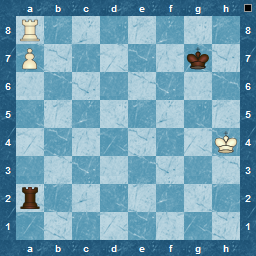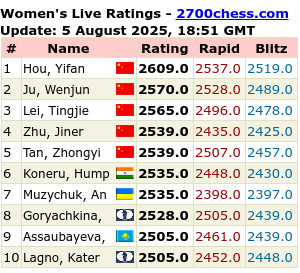A simple, but intriguing endgame from the Leonard Barden chess column in the Guardian.
Leonard Barden was one of the two chess authors who enriched my schoolboy days, the other being Harry Golombek.
Although Fred Reinfeld may be very well known in the US, in Britain in the 1960s and 1970s, I had barely heard of him, and, obviously, stuck with home-grown authors.
My local library appeared full of Barden and Golombek books, and after many borrowings, eventually I bought Golombek's "The Game of Chess" and Barden's "Chess" ( I think those were the titles ). I also dabbled with "Teach Yourself Chess", which in those days was written by Gerald Abrahams, another great chess educator, but frankly, not for youngsters, as it is far too erudite.
I still have the Golombek book, but Barden's book is nowhere to be found in my house, maybe its hidden at my parents'.
A couple of years ago, I saw and bought another Barden book, his 1957 'A Guide to Chess Openings', in hardback, and in remarkable condition for its age ( it was second-hand ).
It is very enjoyable seeing recommendations from 50+ years ago, along with games by players that are distinctly minor now, but presumably were significant at the time, such as Borodin, Unzicker, von Scheltinga, Kramer , as well as stalwarts of the British chess scene like Milner-Barry, Thomas and Yates.
Along with the usual Openings fare, he also has neat comparisons between current ( ie 1957 ) openings and those of 50 years previously, for example annotating and comparing a Spanish Game between Steinitz/Tchigorin in 1892 and Keres/Tarnowski in 1952, as well as the same for a Queen's Gambit.
He concludes that modern (1957) openings are played with "greater exactitude", that modern masters have a "much better defensive technique", but that "no modern master could have surpassed the imagination and dash of Steinitz' final attack."
I dare say the same holds today, but even more so, especially around defence.
In this book, I like his presentation of the openings, particularly as he gives at least one annotated game in full as a demonstration of his discussed points, plus in complicated openings, he also has diagrams showing "position favourable to Black/White" and giving concrete reasons.
His recommendations are, as was usual for the time, split into positional vs combinative players.
I won't give them all, but as examples, he recommends combinative players with White, to choose the Vienna Opening or the B-B4 ( ie Bf4 ) line in the Queen's Gambit, or in the Nimzo-Indian, the P-R3 or P-K3 ( ie a3 or e3 ) variations.
For Black, the Sicilian versus P-K4, or else KtxP defences to the Spanish, and the Yugoslav systems in the King's Indian against P-Q4.
Positional players as White are advised to try the Spanish or else the Pirc-Eliskases* system against the King's Indian.
As Black, out comes the French Defence, or Boleslavsky's variation of the Sicilian against P-K4, and in the Queen Pawn Openings, the Nimzo-Indian.
The book is squarely aimed at amateurs, or rather for use in "match-play", a term which I take to encompass the style of British County Tournaments from that period, similar to that used by William Winter in his excellent "Chess for Match Players" from the same time.
Maybe that "County Play" is the reason,that under "Other Openings" he gathers the English Opening and gives only a paragraph to 'a quiet system with which the Belgian master Colle scored many successes in the 1920s' .
These days, as the Colle System, this is championed by many amateurs, along with the London and similar Queen Pawn Systems, as an easy to play opening, but with a bite !
Evidently, match-players in the 1950s did not go for Opening Systems, but rather were encouraged to play 'proper' openings.
Now, back to the puzzle.
Barden describes it as " Black to play in a trivial rook ending. Is there a trick available? ", and that second sentence should be noted, since it is indeed a trivial Rook and pawn ending that any amateur could win as White, but on the other hand, if you are tired or over-confident...
I admit I had the correct idea, but not the actual solution.
 |
| Black to play |
Hint [ Technically, this is more about what White did wrong after Black's encouragement, than anything else. Chess psychology to the fore! ] ]
Solution [Black chose 1…Kf7! and White quickly replied 2 Rh8?? expecting the standard trick Rxa7? 3 Rh7+ and 4 Rxa7 but found himself tricked after 2…Rh2+! and Rxh8. ]
* The Pirc_Eliskases system, I cannot find, although I am not a King's Indian player so maybe its re-named these days.( Barden names it as such after d4, Nf6, c4, g6, Nc3).
Using the example game given by Barden ( L Szabo vs F Molnar, Hungary, 1950, I believe these days it is called the "Anglo-Indian" and is now ECO A15 or E60,. Note that the the "L Szabo" is certainly Laszlo Szabo, but the "F Molnar" is probably Istvan Molnar. Pirc we should all know :) , but Eliskases was new to me and turns out to be an Austrian Master, with one of his claims to fame being that he beat 3 World Champions ( Euwe, Capablanca and Fischer ) including defeating Capablanca in an endgame. He is probably the only Austrian Master to achieve such a feat !


0 comments:
Post a Comment